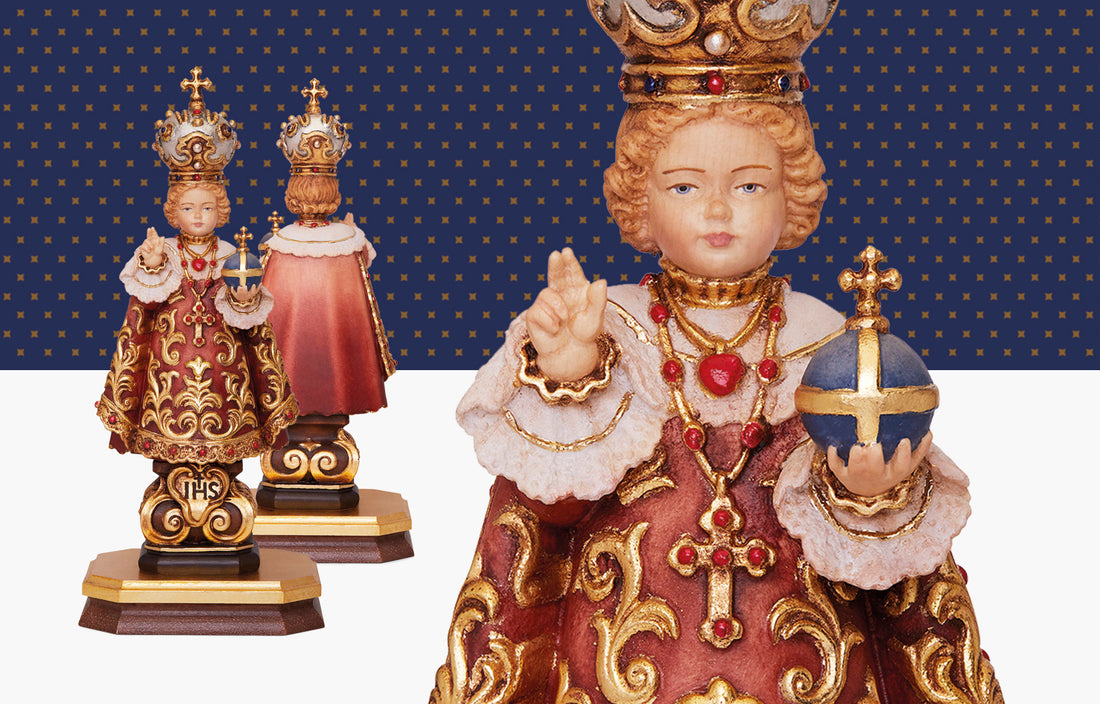In Prague, in the district of Malá Strana, stands the church of the Virgin Mary of Victory, one of the most famous pilgrimage sites of the Czech Republic.
Every year it welcomes thousands of faithful from all over the world, who go there in search of healing, spiritual help or simply to give thanks.
The Church is not only known worldwide for its extraordinary beauty, but – and above all - because of the famous statue of the Infant Jesus, also known as the Infant Jesus of Prague.
It is a work of about 50cm is carved of wood and coated with wax. The representation, however, is far from the traditional representation of the Infant Jesus, covered with bands in a barn in the cold and frost.
The sculpture is in fact adorned with a repertoire of sumptuous clothes, purple, white, red etc. as it is considered as the Infant Jesus of Victory - remembers Father David Sollami in an interview.
The statue, venerated for more than four centuries, is not of Czech, but Spanish origin.
It was born by the will of Teresa of Avila, a mystic and founder - together with Saint John of the Cross - of the nuns and the Discalced Carmelite friars; then passed into the hands of the noblewoman María Manrique de Lara who in turn gave her as a wedding gift to her daughter Polyxena von Pernstein, known as Princess Polyxena of Lobkowicz.
By the kind will of the princess - who became a widow - she returned, in 1628, to the order of the Discalced Carmelites, custodians of the church of the Virgin Mary of Victory in Prague. But it was in 1744 that the small statue was - so to speak - granted honorary citizenship of Prague [at that time Bohemia].
Frederick II of Prussia conquered the Czech capital. The statue of the child was then taken to the street in a solemn procession through the streets and soon, the city was freed thanks to the intervention of Charles of Lorraine.
In 1784, however, the Carmelites had to leave the sanctuary, due to the laws of Joseph II - representatives of enlightened despotism - and the worship of the Infant Jesus experienced an intense and lasting decline.
Only between the nineteenth and twentieth centuries there was a revival of the worship and – at this time - the image spread throughout the world, once again, thanks to the work of the Carmelites
TERESA OF AVILA AND THE STATUES OF THE INFANT JESUS
The love for the Jesus’s humanity and for his childhood has marked the life and spirituality of St. Teresa of the Infant Jesus (Teresa of Avila) and St. John of the Cross (Juan Álvarez), who are both considered Doctors of the Church.
The two saints teach how to contemplate the God-Man from the crib to the passion, and to meditate and emulate the Mysteries of his life.
Father Davide Sollami recalls - in a recent interview - the habit of Saint Teresa to bring a statue to every monastery of her foundation.
The Carmel tells how originally the statues were seventeen, each assigned to a monastery, except one, donated to María Manrique de Lara in a moment of spiritual need.
Discover our Infant of Prague 12-inches hand carved wooden statue
